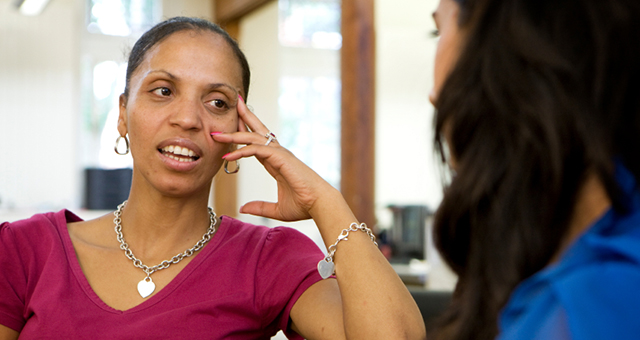As educators, we often take for granted the level of personal information we ask students to share with us. In my own experience as an academic advisor, my meetings with students often touch upon the personal, even when on the surface they may seem academic in nature. Yet, although we ask students to share these personal aspects of their lives with us, we rarely share the details of our lives with them. In some professional settings, such as higher education, it can be a challenging experience to straddle the line between being professional and allowing ourselves to be human. However, I believe that it is possible for us to share parts of ourselves, our stories, and our experiences with our students without overstepping boundaries, and in doing so develop trust and meaningful bonds. The way we can do this is through vulnerability and authenticity. Here are some ways in which we can put vulnerability and authenticity into practice:
Share Your Story
There are poignant and valuable life experiences that we all have and that our students can benefit from as we guide them along their own journeys. It can be as simple as sharing our experiences of what it was like to choose a major in college as a way of supporting a student who is having difficulty choosing their own. It can also be as deep as sharing an experience of what it was like to lose a family member while juggling the demands of college, and the steps we took to overcome it, as a way of helping a student overcome a similar situation in their own life. No matter the situation, having the courage to share our own experiences, especially as it relates to the lives of our students, shows students that we, too, are human, and that they are not alone in what they may be going through.
. . . But Don’t Overshare
We should also be careful of oversharing. An easy rule of thumb to follow when sharing information about ourselves with our students is to always consider this question: How is sharing this information about myself helpful to my student? Being vulnerable and sharing our stories with our students should be an intentional act that has a clear purpose. By keeping this simple question in mind, we can create healthy boundaries while, at the same time, showing our vulnerability and authenticity.
Perform Check-Ins
Our conversations with students do not need to end when they leave our offices. It is a good practice to check in with students who we may be concerned about to make sure that they are OK. When we show that we genuinely care for our students, it is appreciated and remembered.
Take Accountability
Being an educator does not mean that we know everything or that we perform every task perfectly. We make mistakes. However, at the end of the day, what matters most is how we handle it. One of the ways in which we can best handle situations where we may have fallen short is by being honest and acknowledging our errors, and then taking the next best steps to resolve it. Instead of beating ourselves up or trying to hide it, we need to hold ourselves accountable, be honest with our students, and do what we can in order to continue to support them. By practicing honesty and accountability, not only do we build trust with our students, but we teach our students to be honest with themselves and others, as well.
Gerri K. Connaught is a Licensed Master Social Worker and an Academic Advisor for the Parsons School of Design at The New School. She has worked with various populations of students in higher education, including student veterans at Borough of Manhattan Community College and adult learners at Brooklyn College. Gerri currently works with college freshmen and helps them transition from high school to college.



